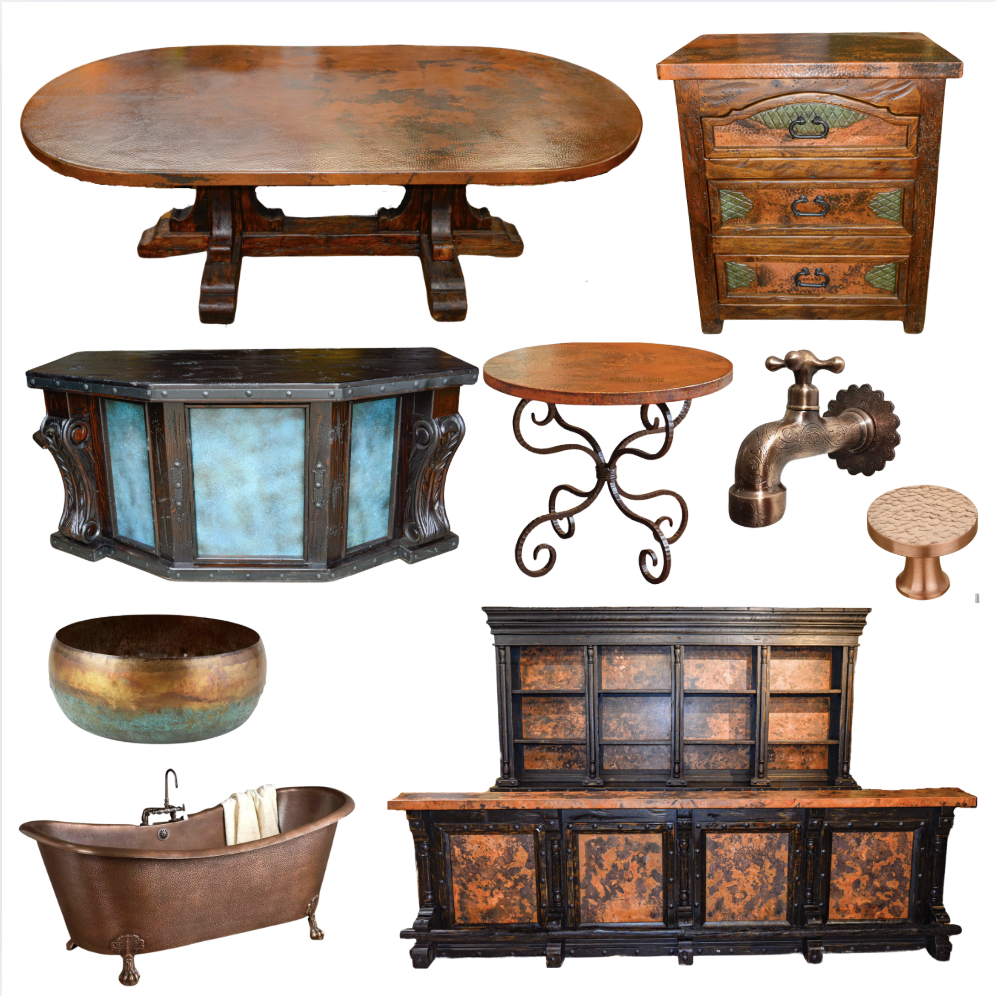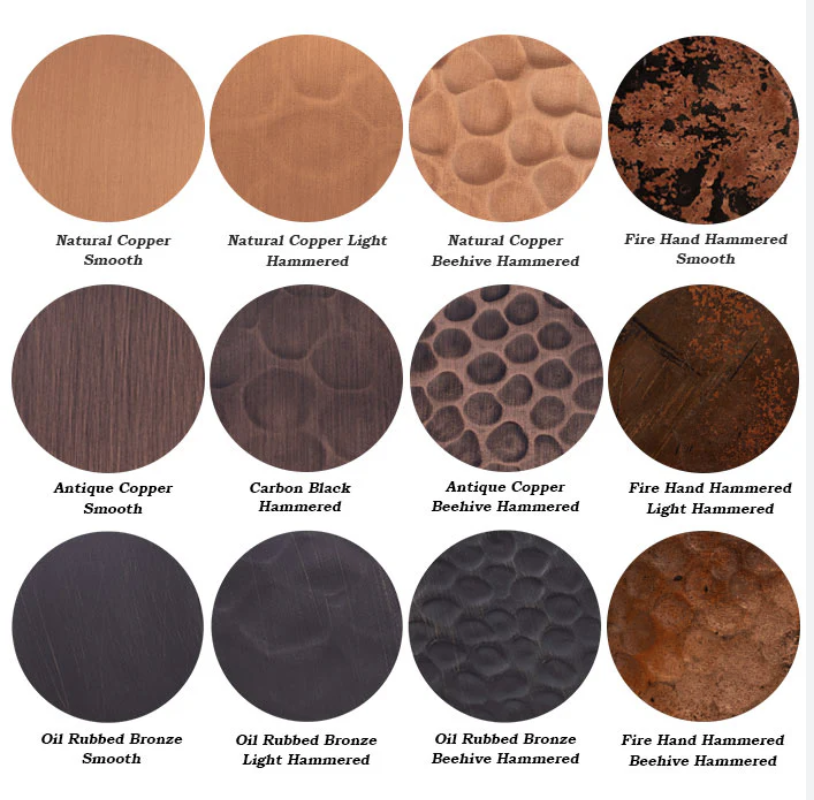Hammered Heritage: The Art of Copper in Furniture & Design
Where Copper Comes From
Copper is one of the oldest metals used by humankind, dating back over 10,000 years. It occurs naturally in the earth’s crust and is primarily mined in countries like Chile, the United States, and yes—Mexico, which has rich copper deposits, particularly in states like Sonora and Zacatecas. Mexican copper has a long tradition of being hand-hammered into stunning artisan works, especially in towns like Santa Clara del Cobre, which is internationally recognized for its copper craftsmanship.
Jose Luis Stephens/Shutterstock.com
How Copper is Formed and Shaped
After being extracted from the earth, copper ore is refined through smelting and electrolysis to reach its purest form. Once purified, the metal becomes incredibly malleable and ductile—meaning it can be easily shaped, hammered, or cast into virtually any form. This flexibility makes copper ideal for both structural and decorative uses in furniture and architecture.
Copper can be:
Rolled into sheets for table or countertop inlays
Cast into hardware like drawer pulls, knobs, and handles
Hammered into decorative panels or accents
Twisted into ornamental trim or scrollwork
The hand-hammered technique, in particular, gives copper a rustic, organic texture that reflects light beautifully and evokes a sense of old-world artistry.
Hammered Copper as a Decorative Style
Hammered copper isn't just about looks—it’s a celebration of craftsmanship. Artisans use hammers to manually texture the surface, giving each piece a unique, tactile finish. This process not only enhances the visual depth of copper but also improves its durability by compressing the metal's surface.
In Western and hacienda-style decor, hammered copper is often featured in:
Tabletops
Range hoods
Sinks
Mirror frames
Cabinet fronts
Fireplace surrounds
The distinctive dimpling and warmth of hammered copper create an earthy, aged elegance that ties perfectly into the natural and handcrafted aesthetic of rustic interiors.
Copper in Furniture and Décor
Copper can elevate furniture from functional to fine art. Whether used subtly as trim or boldly as a tabletop, copper adds a glowing, warm metallic touch that blends beautifully with woods, leathers, and natural fabrics.
Common copper furniture and décor elements include:
Dining and coffee tables with copper inlays or full copper tops
Sideboards and buffets with copper paneling
Bed frames or headboards with copper accents
Lighting fixtures with copper shades
Wall art or sculptural decor
Because of its antimicrobial properties and resistance to corrosion, copper is also a practical choice for surfaces that need to withstand frequent use.
Copper in Western Hacienda Style
In Western and Hacienda-style homes, copper is an essential material. These design styles prioritize warmth, natural materials, and a connection to history and heritage. Copper plays a starring role in this aesthetic, complementing elements like reclaimed wood, wrought iron, cowhide, and adobe.
The use of aged or patinated copper in these interiors evokes an Old World, colonial Spanish vibe that feels both luxurious and grounded. Whether it’s a hammered copper sink in a rustic kitchen or a grand dining table with a copper top, the metal’s reddish glow adds richness and depth.
The Value and Versatility of Copper
Copper's value extends beyond its beauty. It's a precious and semi-precious metal with rising demand, both in design and industrial applications. Its natural properties include:
High thermal and electrical conductivity
Antimicrobial qualities
Natural resistance to corrosion
These qualities make copper not just a design statement but a durable investment in your home.
Finishes and Colors of Copper
Copper develops a natural patina over time, shifting from its original reddish-gold hue to deep browns, blues, and greens, depending on environmental exposure. This patina is prized for its character and uniqueness.
Finish options include:
Polished copper – bright and shiny, more formal
Brushed copper – soft luster with minimal reflectivity
Antiqued or darkened copper – artificially aged for a rustic feel
Patinated copper – intentionally oxidized to create blue-green or deep bronze surfaces
Burnished copper – lightly polished to show highlights while preserving texture
These finishes allow copper to blend seamlessly into any décor—from refined to rugged.
From the depths of the earth to the heart of your home, copper tells a story of tradition, craftsmanship, and timeless design. Whether it’s hand-hammered in a Mexican workshop or incorporated into a Western hacienda-inspired interior, copper brings a unique warmth and elegance that few materials can match.
As more homeowners seek authenticity and artisanal quality in their spaces, copper remains a staple—forever grounding us in the rich textures of the past while adding a radiant glow to the present.





